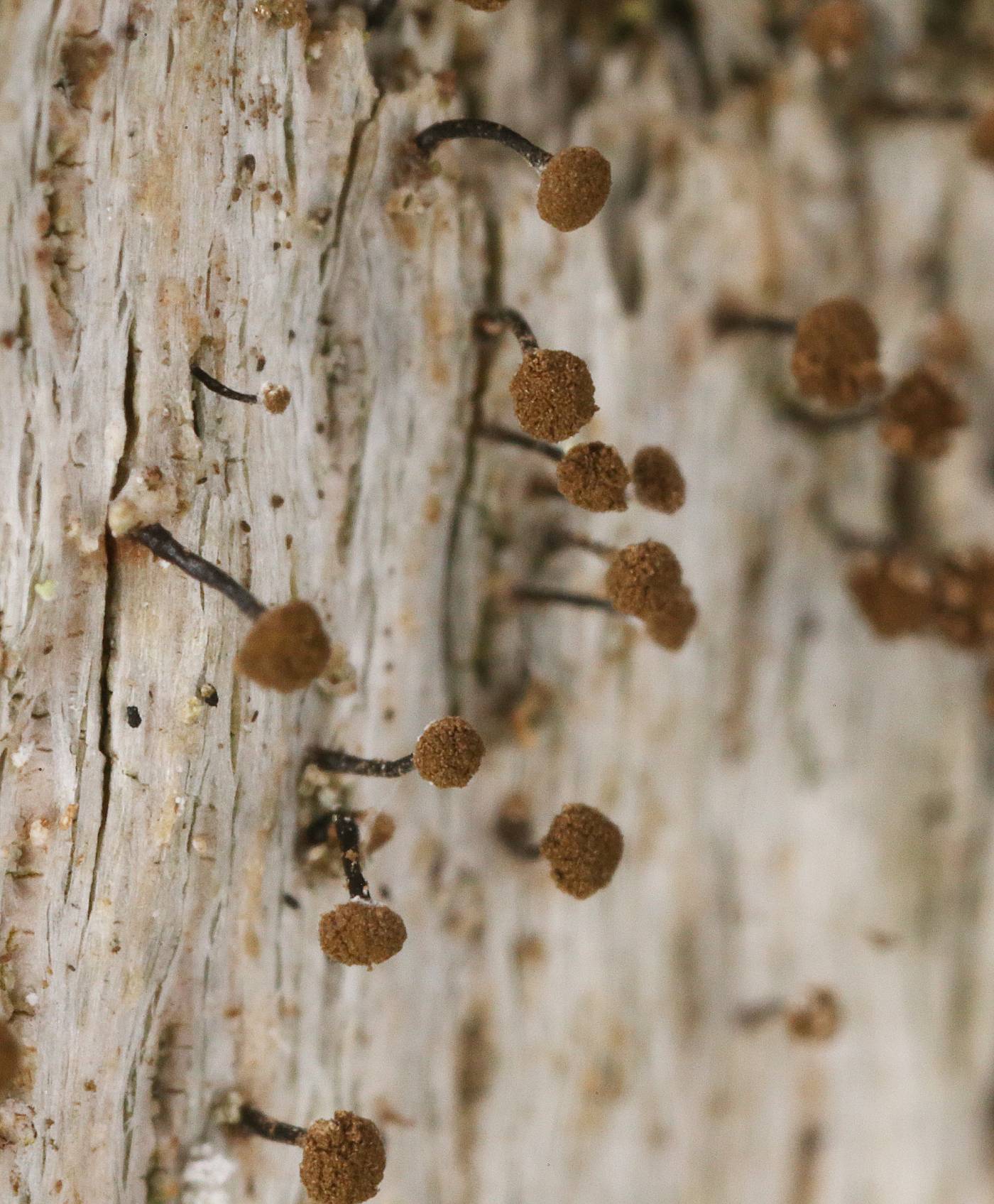The thallus of C. xyloxena is immersed in a substrate and contains algae from the genus Stichococcus. The tops (heads) of apothecia are usually white-pruinose on their underside. The lichen is typically lignicolous, preferring any type of standing wood (snags, higher stumps, cavities in living trees, etc.) Rarely, the species appears directly on acidic tree bark. It occurs in various forest types, from lowlands to mountains. It is found more often in older forests with a rich supply of dead wood than in intensively managed ones. The species is sparsely distributed to locally common (mainly in mountain forests) both in the Czech Republic and central Europe.
This species was described by the Czech lichenologist J. Nádvorník. Two specimens from the Czech Republic are mentioned in the original description (Nádvorník 1934), but as the lectotype was later selected a lichen collected in the Ukrainian Carpathians (Tibell 1980).
Literature: Nádvorník J. (1934): Calicieae-Studien aus der Tschechoslowakei. – Fedde, Repertorium, 34: 307–310. Tibell L. (1980): The lichen genus Chaenotheca in the Northern Hemisphere. – Symbolae Botanicae Upsalienses 23: 1–69.
taxonomic classification:Ascomycota → Lichinomycetes → Coniocybales → Coniocybaceae → Chaenotheca
Red List (Liška & Palice 2010):VU – vulnerable
Occurrence in the Czech Republic
All records: 372, confirmed 328. One click on a selected square displays particular record(s), including their source(s).
